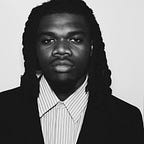Caged Bird: Analysis Statement
“Cage Bird” by Maya Angelou is a story depicting two different perspectives of two different birds. The first bird has a life of freedom whereas the second bird is caged and mistreated by an unspecified tyrant. In “Cage Bird” Angelou creates a powerful distinction that shows the historical context of racial discrimination, segregation, and inequality during the 1950s and 1960s and fought for the integration of all people. The poem is parallel to the harsh oppression African America received in America. Through Angelou’s use of symbolism, tone, and theme the mood of “Caged Bird” shifts sharply from stanza to stanza. In, addition to that Angelou’s peculiar diction helps reflect the shift from positive to negative with a few elements of faith and hope intertwined. Angelou uses caged birds to create a sense of entrapment that lets the bird see the free sky but cannot soar because of the mental and physical entrapment. This lets the bird know there is freedom but it can’t attain because it’s not given to them by those keeping it trapped. Though the bird cannot soar it’s spirit remains resilient and it still expresses it’s opinion despite it’s bonding. The free bird presents the reader with a sense of endless freedom, self-government, and freedom of choice simply because it can soar among the clouds freely without having anyone or thing in between it’s (choices) and life.
The Overall Meaning: In simpler terms the poem is about the racial segregation between white and blacks in America during segregation. Ironically, this is still going on and with the digital age America can witness what White America is all about. We are still caged no physically but mentally. They can lock your body but not your mind.
